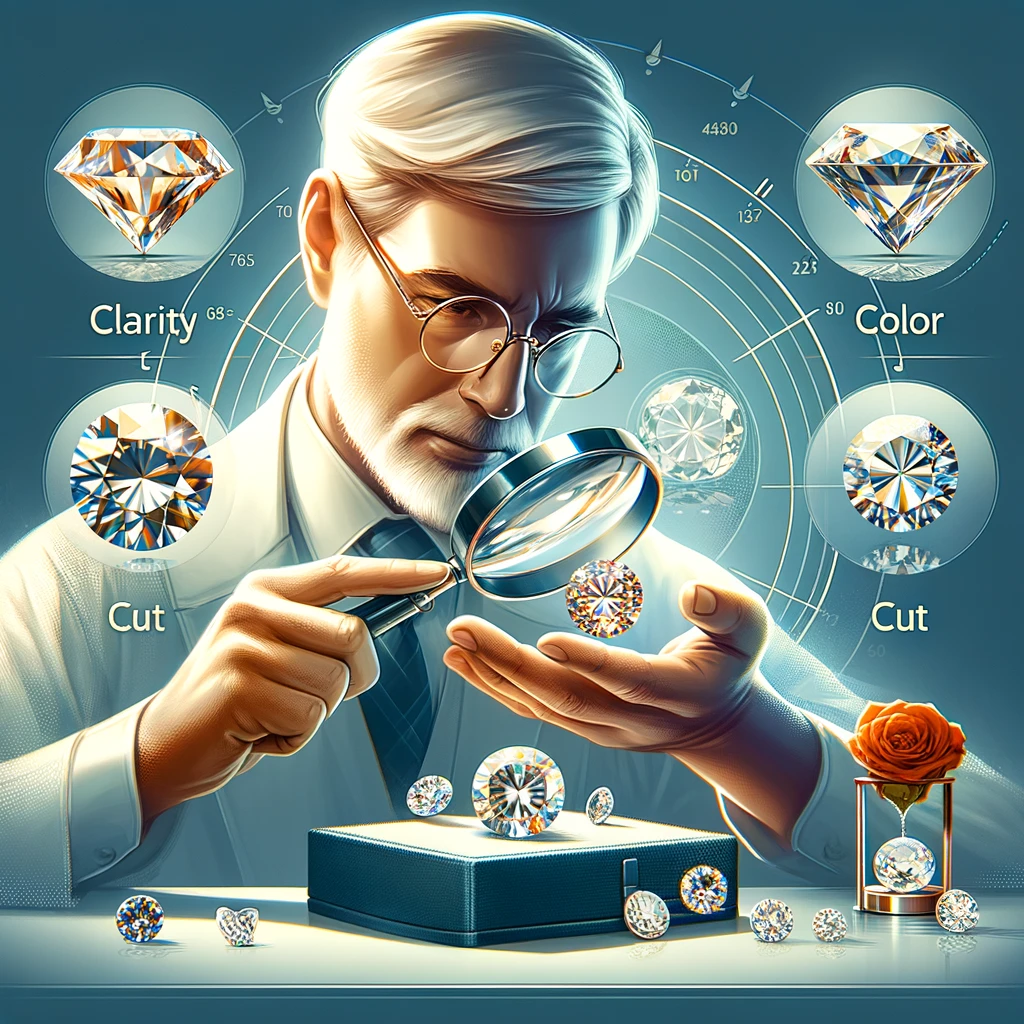Diamonds and gold are both highly coveted substances with enduring value and appeal, but diamonds generally command higher prices than gold. This disparity in value can be attributed to several factors, including rarity, market demand, versatility in use, and the intrinsic qualities of each material.
Rarity and Formation

One of the primary reasons diamonds are more expensive than gold is their rarity. Diamonds are formed deep within the Earth’s mantle under extreme pressure and temperature conditions and are brought to the surface through volcanic eruptions. This process takes billions of years, and the specific conditions required for diamond formation are infrequent, making natural diamonds exceptionally rare.
In contrast, gold is more abundant and easier to extract. While gold mining is an intensive process, the ore is more readily available and distributed across various geographical locations, making the supply more stable and extensive than that of diamonds.
Market Demand and Perception
The market demand for diamonds is significantly driven by their perceived value as symbols of wealth, love, and commitment, particularly in the context of engagement rings and fine jewelry. This perception has been carefully cultivated over many years through marketing campaigns, most notably by De Beers, which popularized the idea that diamonds are synonymous with eternal love and should be the stone of choice for engagement rings.
Gold, while also considered a symbol of wealth and status, is seen more as a commodity and a stable investment rather than an emblem of emotional value. Its price is influenced by different factors, including economic conditions, investment trends, and industrial use, which can fluctuate more predictably than the market demand for diamonds.
Versatility and Usage

Diamonds are prized for their unparalleled hardness and brilliance, making them ideal for use in jewelry that is meant to last a lifetime or longer. The cutting and polishing of a diamond enhance its natural luster and sparkle, characteristics that are highly valued in the jewelry market.
Gold, being a soft, malleable metal, is also widely used in jewelry, but its applications extend beyond adornment. Gold is used in electronics, dentistry, and aerospace for its conductive and corrosion-resistant properties. Although these uses contribute to gold’s value, they do not elevate its price to the level of diamonds in the luxury market.
Intrinsic Qualities
The intrinsic qualities of a diamond, often encapsulated by the industry-standard 4 Cs—clarity, color, cut, and carat weight—play a crucial role in determining its value and desirability. These characteristics not only define a diamond’s beauty and brilliance but also its rarity and, consequently, its market price.
- Clarity: This refers to the absence of internal inclusions or external blemishes on a diamond. Natural diamonds are formed under immense pressure and heat, leading to various imperfections. The fewer the inclusions (internal imperfections) and blemishes (external imperfections), the higher the clarity grade. Diamonds are graded under 10x magnification, and their clarity can range from flawless (FL) to diamonds with obvious inclusions (I3). Higher clarity diamonds are rarer and therefore more valuable.
- Color: While many people think of diamonds as colorless, most diamonds have slight tones of yellow or brown. The color grading scale ranges from D (colorless) to Z (light color). Colorless diamonds are the most desirable as they allow the most light to pass through, enhancing the stone’s inherent sparkle. The presence of color can detract from a diamond’s ability to reflect light, impacting its brilliance.
- Cut: Often confused with the shape of a diamond, the cut actually refers to how well the diamond’s facets interact with light. Precision in the cut affects a diamond’s symmetry, proportioning, and polish, influencing its overall appearance and luminosity. A well-cut diamond will exhibit more fire, scintillation, and brilliance, making it more appealing and valuable.
- Carat Weight: This is perhaps the most straightforward of the 4 Cs, referring simply to the diamond’s weight, with one carat equaling 200 milligrams. While larger diamonds are rarer and thus more expensive, carat weight alone does not determine the value. Two diamonds of equal weight can have very different values depending on their clarity, color, and cut.
Beyond the 4 Cs, other factors can influence a diamond’s intrinsic qualities, including fluorescence, symmetry, and polish. Fluorescence refers to a diamond’s tendency to emit a soft colored glow when subjected to ultraviolet light. While not a part of the 4 Cs, fluorescence can affect a diamond’s price and appeal, depending on its intensity and market perception.
The meticulous grading of these intrinsic qualities ensures that each diamond is unique and valued accordingly. This rigorous evaluation process underpins the diamond industry, providing buyers with the confidence they need to understand the value of their purchase. Whether for investment, adornment, or expression of love, the intrinsic qualities of a diamond define its character and legacy, making it a treasured possession for generations.

